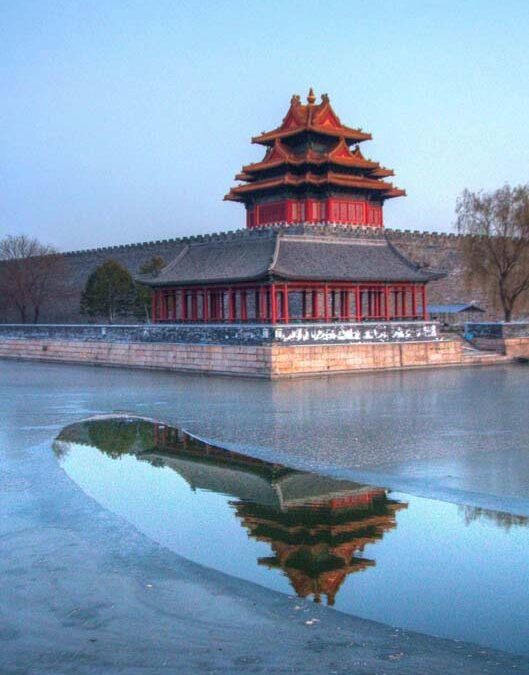Donghua Gate: The Eastern Sentinel of the Forbidden City
At the eastern edge of Beijing’s Forbidden City, nestled between the vermilion walls and tiled rooftops of China’s most iconic imperial complex, stands the Donghua Gate—known in English as the Glorious East Gate. Unlike the grand Meridian Gate to the south or the Gate of Divine Might to the north, Donghua Gate is modest in scale but rich in historical function and symbolic meaning. For centuries, it served not as a ceremonial entrance, but as a passage woven into the daily rhythm of imperial life, governance, and even death.
Constructed between 1406 and 1420 during the early Ming Dynasty under Emperor Yongle, the Donghua Gate is one of the four main gates of the Forbidden City, aligned with the cardinal directions. While the southern gate was reserved for emperors and grand processions, the eastern gate had a more practical and ritualized role. It was primarily used by imperial officials, palace attendants, and members of the royal family for routine access. More significantly, it was the gate through which the coffins of deceased emperors and empresses were carried out—a tradition rooted in Chinese cosmology and feng shui, which dictated that the living enter from the east (the direction of sunrise and renewal), while the dead exited the same way, completing the cycle of life.
Architectural Design and Symbolism
Donghua Gate is a two-story pavilion-style structure, measuring approximately 19 meters in width and 12 meters in depth, with a double-eaved hip roof covered in yellow glazed tiles—reserved exclusively for imperial buildings. The gate features a central passageway flanked by smaller side arches, all constructed from stone and brick with intricate wooden dougong brackets supporting the overhanging eaves.
One of its most distinctive architectural features is the asymmetrical staircase layout on the gate’s exterior. Unlike the centrally aligned stairs of other gates, Donghua Gate has an offset staircase on the southern side, a design choice that has puzzled historians. Some scholars suggest it was intended to maintain feng shui balance within the palace complex, while others believe it reflects the gate’s functional rather than ceremonial status.
The gate’s name, Donghua Men (东华门), translates to “Eastern Splendid Gate,” echoing the poetic nomenclature of the Forbidden City’s entrances. The “hua” (华) character signifies brilliance or glory, reinforcing the gate’s association with imperial dignity—even in its understated role.
Historical Function and Imperial Use
Throughout the Ming (1368–1644) and Qing (1644–1912) dynasties, Donghua Gate functioned as a logistical and administrative access point. Officials from the Eastern Depot, a secret police agency during the Ming era, were known to operate near this gate. In the Qing period, it became a regular route for princes, eunuchs, and palace staff entering and exiting the inner court.
Its association with death is one of its most enduring historical roles. When an emperor passed away, his coffin was carried out through Donghua Gate in a solemn procession, often at dawn, symbolizing the soul’s journey eastward—toward the realm of the rising sun and the afterlife. This practice reinforced the gate’s spiritual significance, setting it apart from the more politically charged entrances of the palace.
During the late Qing and Republican periods, the Forbidden City’s role shifted from active imperial residence to museum and cultural relic. Donghua Gate, like the rest of the complex, was preserved as part of the Palace Museum, established in 1925. Today, it is not open to general pedestrian traffic but remains a key architectural landmark within the site.
Preservation and Cultural Legacy
The Donghua Gate has undergone multiple restoration campaigns, particularly during the 20th and 21st centuries, as part of broader efforts to conserve the Forbidden City’s structural integrity. In 2007, a major conservation project focused on repairing weathered wooden elements, re-glazing roof tiles, and reinforcing the foundation against subsidence.
In recent years, the gate has also become part of a larger cultural initiative. Since 2016, the area around Donghua Gate has housed a palace-themed cultural exhibition space, showcasing historical documents, architectural models, and artifacts related to the daily operations of the imperial household.
Unlike the heavily touristed Meridian Gate, Donghua Gate offers a quieter, more contemplative experience—ideal for understanding the functional and symbolic layers of imperial Chinese urban planning. Its design reflects the Confucian principles of hierarchy, order, and harmony with nature that defined the Forbidden City’s layout.
A High-Resolution Record of Imperial Heritage
The photograph of Donghua Gate—captured in crisp detail, with morning light illuminating its golden roof and red pillars—serves as a precise visual document of Ming-era palace architecture.
This image is available as a high-resolution digital download—no physical product included.
- Ideal for academic, design, and cultural projects: Use in architectural studies, history publications, museum displays, or educational materials.
- Suitable for commercial and editorial use: Licensed for heritage documentation, travel media, and cultural branding.
- Museum-grade quality: Optimized for large-format printing, digital archives, and professional presentations, with exceptional clarity in textures, colors, and structural details.
More than a visual record, this image preserves the quiet dignity of a gate that witnessed centuries of imperial routine, ritual, and transformation—a silent sentinel of China’s most storied palace.
Download the digital file and integrate a piece of Beijing’s imperial legacy into your work. To Purchase, CLICK HERE!!!



